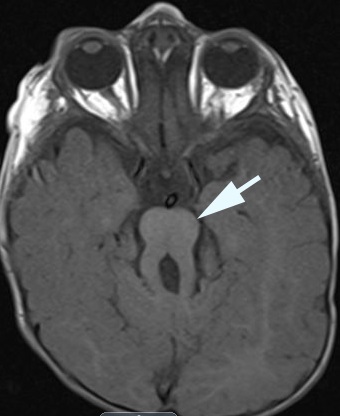Congenital Ocular Motor Apraxia
- Congenital impairment of horizontal saccadic and pursuit eye movements with a spared vestibulo-ocular reflex
- May be isolated or associated with other developmental, metabolic, or hereditary neurologic conditions, including ataxias
- Attributed to delayed maturation of the cerebral pathway that initiates horizontal gaze
- Spontaneous improvement by the second decade of life
- Blinks and head thrusts accompany shifts of horizontal gaze
- Child cannot initiate horizontal saccades or pursuit to targets moved horizontally
- Intact horizontal vestibulo-ocular reflex, triggered with the doll’s eye maneuver
- Intact vertical eye movements
- Developmental delay and other neurologic deficits sometimes
- Brain imaging may show vermis hypoplasia, other brain dysgenesis, perinatal ischemia, heterotopias, or elongated superior cerebellar peduncles (“molar tooth sign”)

- Head thrusts of an involuntary movement disorder
- Myasthenia gravis
- Genetic extraocular myopathy
-
Tip: the child may appear to be blind because visual stimuli do not elicit horizontal eye movements directed at the target
- Look for distinctive head thrusts
- Rule out other neurologic abnormalities
- Order brain MRI
- Refer for metabolic screening if MRI provides no diagnostic clue